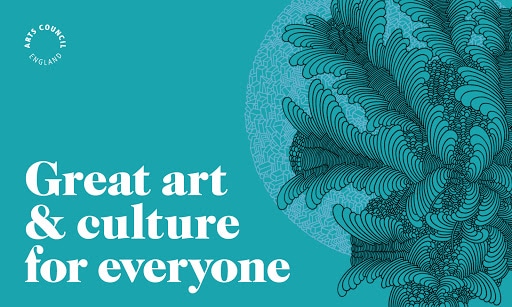
In the last member’s newsletter, we focused on building resilience by thinking about the relevance and impact of your creative work on the wider society. You can read it again here to jog your memory. In the piece, we wrote about the importance of having a solid foundation of your artistic and social vision and mission to make sure you stay true to your cause, and in this piece we are signposting you to a few toolkits out there for vision and mission.
Artistic Vision and Mission V.S Social Vision and Mission
I took a 9-month course for arts organisations at the School of Social Entrepreneurs a few years ago and learned how artists and arts organisations need to have two types of vision and mission statements.
We are all quite familiar with Artistic statements, and some of yours may already incorporate a good amount of social impact intentions. To help you understand the interplay between artistic and social visions, I suggest we spend some time looking at the differences.
But before we delve into this, let’s be clear about the difference between vision and mission.

Vision V.S Mission
A vision statement is aspirational:
- Why do you exist?
- What are your goals, and what would the world look like if you achieved them?
It’s a statement of intent that you, your collaborators and audiences or participants can get behind. It’s focused on the future and the change your work will make. Sony’s vision for example is: To fill the world with emotion, through the power of creativity. And Oxfam’s is: To end poverty.
A mission statement is what you do on a day to day to realise your vision:
- What you do
- How you do it
- Who you do this for (i.e. audiences / beneficiaries)
- Mission statement focuses on the here and now.
The key thing to stress is that these statements need to be concise – it’s difficult to have statements that are unwieldy and difficult to remember.


Creating a social vision and mission statement
I found exploring how social entrepreneurs do vision and mission statements useful in thinking about the social impact of artistic work. LinkedIn in fact, has a good guide for developing vision statements for social entrepreneurs.
An organisation called Antler has done a vision and mission guide for start-ups, which is very comprehensive.
You may find that revising your artistic vision will help you think about social vision and mission, and there are a few guides out there for this too.
I have seen organisations merge social and artistic vision/mission statements, and you may find that you practice has so much potential for social impact that it becomes quite integral to your artistic vision and mission.
Artistic V.S Social
When Let’s Create was launched, Arts Council England signalled a big step change. Their previous strategy Great Art for Everyone placed greater emphasis on us having clear Artistic Visions, but Let’s Create asks us to reflect on how our artistic practice impacts on individuals and communities. The rationale was that it enables the arts to extend its reach into the fabric of the everyday and by becoming embedded in all corners of the society, the arts will become something essential for the general public. It will enable the Arts Council to broker more funding from a wider base, but also in theory, it should help artists and arts organisations build resilience by widening their pool of opportunities and resources.
So, to make this step change, just having an artistic vision and mission is no longer enough. To make your art relevant to new communities, you have to speak their language and make yourself more relevant to their concerns. This is when Social Vision and Mission becomes necessary.
How to Use Your New Vision and Mission
These statements are very much the guiding stars for a range of projects you might pitch for and deliver, so remember you will need to flesh out your proposals and include track record and some evidence or track record as I mention in the last piece. In theory, you should also be able to use these statements to set some parameters for certain things you might say ‘no’ to.
-Sho Shibata, OAUK Director

